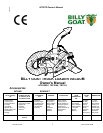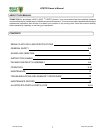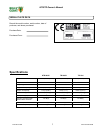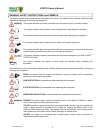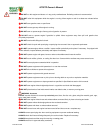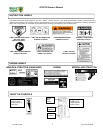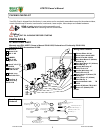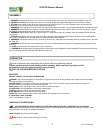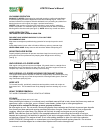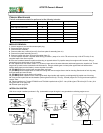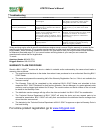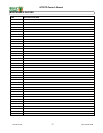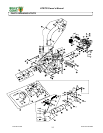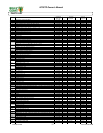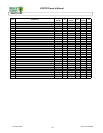
Part No 811202 Form No F021307B
10
HTR/TR Owner’s Manual
ADJUSTING HOSE BOOM
Properly adjusting the boom will prevent most hose clogs from occurring and will
give optimum vacuum performance by keeping hose straight next to housing
(see fig. 2).
VACUUMING OPERATION
EXHAUST FLAPPER: Discharging into enclosed container, position exhaust flapper
to desired opening and secure adjustment knob before starting engine. NOTE: An
enclosed container must capture all debris delivered into it preventing any debris from
blowing back onto unit's engine (see page 1 optional accessories).
NOZZLE: With machine running and fully assembled, move nozzle in sweeping
motions over debris. For maximum pickup, move nozzle close to debris, but without
blocking airflow into the nozzle (see figure 1). NOTE: Never bury nozzle into debris.
HOSE OPERATION TIPS
THE HOSE IS A REPLACEABLE WEAR ITEM.
FOR BEST HOSE OPERATION RESULTS, FOLLOW THESE
RECOMMENDATIONS.
Keep hose as straight as possible during operation for best pick-up and to avoid
clogs.
A
void sharp bends in hose, which will reduce efficiency and may promote clogs.
NEVER DRAG HOSE. Always remove and store hose before transporting unit.
UNCLOGGING A CLOGGED HOSE
With engine running and unit secured to tailgate, fully stretch hose in a straight line to
dislodge the clog. If the clog will not clear, turn unit off, and allow engine to come to a
complete stop. Remove hose and manually clear hose clog.
UNCLOGGING A CLOGGED HOUSING OR EXHAUST ELBOW
Turn engine off and wait for impeller to come to a complete stop. Disconnect spark plug
wire. Danger, the clog may contain sharp materials. Wearing durable gloves, clear the
clog. Reconnect spark plug wire.
HOSE LIFE
To increase hose life, periodically rotate hose and reposition nozzle and coupler on
front plate of unit. This increases hose life by keeping hose from wearing only on one
side.
HEAVY DEBRIS REMOVAL
TILT NOZZLE FORWARD TO PICK UP DIFFICULT DEBRIS.
STORAGE
Turn fuel supply off when unit is not in use.
Never store engine indoors or in enclosed poorly ventilated areas with fuel in tank, where fuel fumes may reach an
open flame, spark or pilot light, as on a furnace, water heater, clothes dryer or other gas appliance.
If engine is to be unused for 30 days or more, prepare as follows:
Be sure engine is cool. Do not smoke. Remove all gasoline from carburetor and fuel tank to prevent gum deposits
from forming on these parts and causing possible malfunction of engine. Drain fuel outdoors, into an approved
container, away from open flame. Run engine until fuel tank is empty and engine runs out of gasoline.
NOTE: Fuel stabilizer (such as Sta-Bil) is an acceptable alternative in minimizing the formation of fuel gum
deposits during storage. Add stabilizer to gasoline in fuel tank or storage container. Always follow mix ratio found
on stabilizer container. Run engine at least 10 min. after adding stabilizer to allow it to reach the carburetor.
HOSE STORAGE: Storing hose in a covered area, out of sunlight and heat will prolong hose life. Do not store
hose where it could be stepped on or where other objects could crush or damage hose.
Fig. 1
Boom Assembly
after hose has
been stretched
Hose Bands.
Stretch hose out
before clamping
Fig. 2
Hose
Fig. 3



